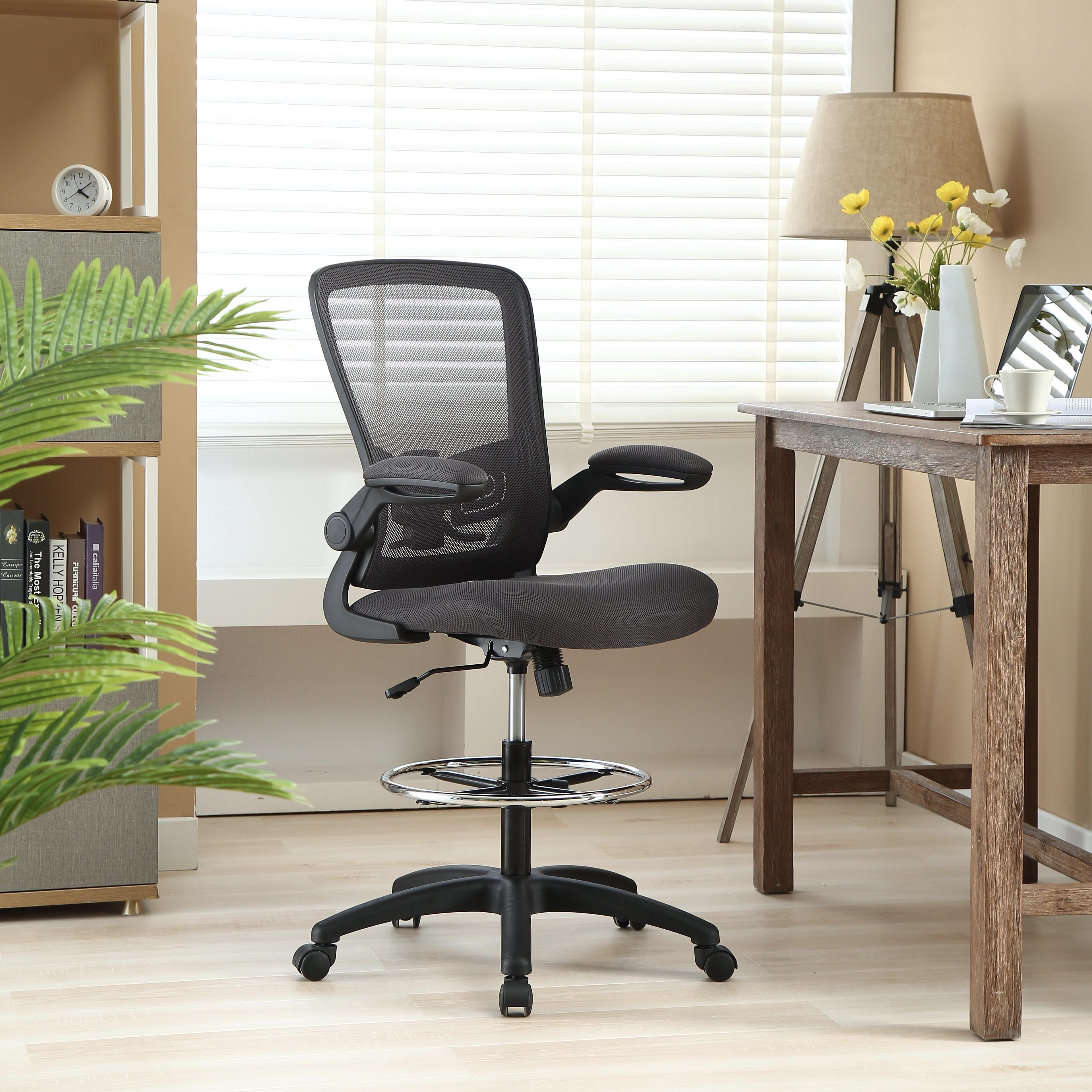Ergonomic Considerations for Standing Desk Chairs: Office Chair For Standing Desk

The integration of standing desks into modern workplaces necessitates a reevaluation of traditional seating solutions. While standing promotes health benefits, prolonged periods of standing can also lead to fatigue and discomfort. A well-designed chair, specifically for use with a standing desk, becomes crucial for mitigating these issues and ensuring optimal ergonomic support throughout the workday. This chair serves not as a replacement for standing, but as a supportive complement, allowing for comfortable transitions between sitting and standing postures.
Ideal Ergonomic Features of Standing Desk Chairs, Office chair for standing desk
Ergonomic design principles should guide the selection of a chair for use with a standing desk. The chair must offer adjustable features that cater to individual anthropometric variations and promote healthy posture. Key features include adjustable back support, seat height adjustability, and lumbar support. The absence of these features can lead to discomfort and potential musculoskeletal problems.
| Feature | Description | Benefit | Impact on Posture |
|---|---|---|---|
| Back Support | Adjustable backrest that conforms to the natural curvature of the spine. | Reduces strain on the back muscles and promotes proper spinal alignment. | Maintains the natural “S” curve of the spine, preventing slouching and associated back pain. |
| Seat Height Adjustability | Mechanism allowing the seat height to be adjusted to ensure feet are flat on the floor with knees at a 90-degree angle. | Reduces pressure on the thighs and lower back, improving blood circulation. | Promotes proper hip and knee angles, preventing strain and discomfort. |
| Lumbar Support | Contoured support in the lower back region to maintain the natural lumbar curve. | Reduces strain on the lower back muscles and prevents slouching. | Supports the lower back, reducing the risk of lower back pain and promoting proper spinal alignment. |
| (Without Features) | Fixed backrest, non-adjustable seat height, and lack of lumbar support. | Limited or no support for proper posture. | Increased risk of slouching, back pain, neck pain, and other musculoskeletal issues. |
Importance of Proper Posture with Standing Desks and Chairs
Maintaining proper posture while using a standing desk and chair is paramount for preventing musculoskeletal disorders. Poor posture, whether standing or sitting, can lead to a cascade of negative effects, including back pain, neck pain, shoulder pain, carpal tunnel syndrome, and even headaches. These problems not only impact comfort but also reduce productivity and overall well-being. The ideal posture involves maintaining a neutral spine, with the head aligned over the shoulders, shoulders relaxed, and hips and knees at approximately 90-degree angles when seated. When standing, maintain a slight bend in the knees and keep the core engaged.
Chair Mechanisms and Their Impact on Ergonomics
Various chair mechanisms facilitate seamless transitions between sitting and standing postures, contributing to user comfort and ergonomics. Pneumatic lift mechanisms provide smooth, adjustable height changes, allowing for quick and effortless adjustments to accommodate different postures and user heights. Tilt mechanisms, allowing for backrest adjustments, provide support during both sitting and leaning positions, accommodating varying user preferences and work tasks. The incorporation of these mechanisms into standing desk chairs significantly improves user comfort and minimizes the strain associated with frequent transitions between sitting and standing. For instance, a chair with a smooth pneumatic lift allows for a quick transition to a seated position when fatigue arises, reducing strain on the legs and feet. Similarly, a tilting mechanism allows for a more relaxed posture while seated, relieving pressure on the spine and improving comfort.
